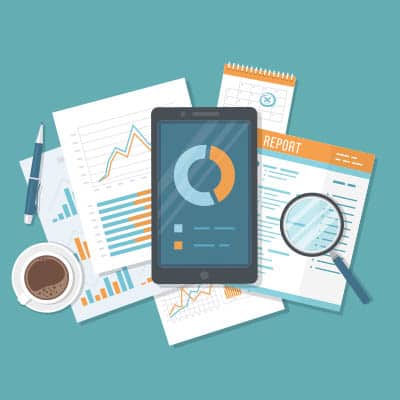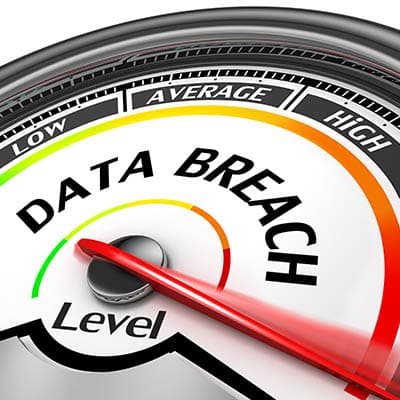Understanding Fleet Management Whether you’re talking about a taxi company or driving service, service organization, product distributors, or any of a wide variety of others, the businesses who get the most value out of fleet management solutions are the ones heavily engaged in transportation. The idea is to better manage a fleet of vehicles to more efficiently deliver the applicable goods or service, thereby reducing overall organizational distribution costs. Fleet management can help you reduce the cost of owning the vehicles that make up the fleet, better enforce policies and procedures geared toward safety, and generally decrease your risk. All vehicle deployments are tracked by a fleet management system via GPS, and if integrated with a CRM, ERP, or other form of management platform, vehicle maintenance can be more effectively monitored and scheduled. Let’s dive into some of a fleet management platform’s benefits a little more closely: Driver Safety Let’s discuss one of the most important factors of having a workforce on the road: the safety of your drivers. Fleet management solutions can help by ensuring they are tracked, and the events of the road are fully transparent, with devices like dash cams installed. Using these devices, drivers are both protected and can boost their efficiency on the road by altering their routes in real-time. This data can also be used to more effectively train drivers. Fleet Tracking It only makes sense that you would want to know the locations of your company’s vehicles. In addition to this obvious benefit, fleet management also enables you to create better routes to make deliveries more efficient, trips less strenuous on the vehicles, and more fuel efficient as well. Driver Retention Many distributors are finding it to be a challenge to keep their drivers on, especially with a current shortage of drivers available. As with any industry, turnover rates are expensive to a business. Incorporating a fleet management system is effectively working to improve workplace conditions by improving the relationships between administrators, and the drivers behind the wheel. Maintenance and Vehicle Acquisition A fleet needs vehicles, so it makes sense that you would want a system in place to help you predict when your vehicles need a little TLC, and when it is time to bring in new rigs. A fleet management system compiles the data necessary to inform your various strategies, like when to buy new vehicles and when to maintain the ones you have. California businesses know SRS Networks as their best option for technology services and solutions. For more information on how your business can help boost its operations and profitability, give our professionals a call at (831) 758-3636.
The only way to be completely private on Facebook is by not signing up, but there are some things you can do to protect your identity. Namely, you can begin limiting what you share and with whom. The social media giant has had plenty of problems over the years. Some are more egregious than others. We don’t want to get into any individual issue too much, but here are a few times where Facebook has stepped over the line: Without consent, 2007 introduced a feature which companies could track purchases by Facebook users and then notify friends of the goods that were bought. In 2011, Facebook was hit with a brutal charge by the FTC. The platform had been allowing private information to be made public, without so much as a warning. Facebook was letting third-parties access user information without consent. In 2013, Facebook had a very generous activity. Alongside the “Donate” button to be able to donate to charities, they also had this helpful bug that leaked the email addresses and phone numbers of over six million Facebook users. 2014 was the year Facebook decided to do some research. They wanted to know if they had the ability to make users depressed. Turns out, they did. They purposely displayed depressing content in hopes that users would feel overwhelmed with depression. In 2015, Facebook finally addressed growing privacy concerns. They put their foot down, and no longer allowed Facebook apps to have boundaryless private user data. What does this mean they were allowing before 2015? In 2018, more sensitive information was released. Who about this time? Facebook. 2018 was the year that revealed Facebook had a massive 50 million user data breach. However, they justified the breach by doing nothing about it, until their reputation began dwindling. Once they noticed how poorly this affected their image, then they decided they should do something about the breach. For Facebook, privacy-related concerns have come to be a regular occurrence. When you have a free-to-use interface that is used by billions of people, you have to be more careful than you would otherwise, while also finding ways to make a profit. This has been proven to be difficult for Facebook over the past few years. Today, we’re going to help you out by providing you with information on how to best protect your Facebook profile. Facebook’s Privacy Options Log in to your Facebook account on your desktop. There is a small down arrow at the top right of the page. Click on it and go to settings. From there, click Privacy. Facebook will allow you to set privacy options that will control the people that have access to your information: Public – Anyone can see this information, even if they are not your current Facebook friends, and even if they aren’t signed into Facebook. In theory, this means search engines can see your information as well. Friends – This means only people you are Facebook friends with can see the information. Friends except… – This lets you filter out some of your friends or specific user-created groups from seeing certain information. Only me – This means none of your friends can see the information, and that it is strictly between you and Facebook. Still, don’t share anything that you wouldn’t want to get […]
Knowing how to protect your individual data often comes down to taking control over your personal information. Today, we will get you started protecting the information you share with Facebook. Let’s get started by logging into Facebook on a computer. You can do a lot from the Facebook mobile app, but you should try to do this part on a computer. Facebook’s Security and Privacy Options Once you are in, you will want to look for a little down arrow in the top right-hand part of the page. Click on Settings. If you ever need to get back to square one, remember that you can always click on the down arrow in the top right corner. Verify the General Account Settings are Correct The first thing you are going to want to do is make sure that you own (and control) all of the email accounts tied to your Facebook account. If you used an old email address (that you can’t get into), you’ll have a hard time getting back into the account if something were to happen. Security and Login – Find Out Where You’ve Logged into Facebook Click Security and Login on the right. Facebook will show you all of the devices that you are currently logged into. Trust us when we say that you will probably be shocked at some of the devices you are still logged in to. It will also show you where your device was last used and the browser type if you weren’t using an app. The longer you have been an active user, the more devices you’ve accessed your Facebook on; and, if you haven’t logged out of the account on that device it will show up here. If you do see a phone or device that you don’t remember using you’ll want to immediately change your password (directions below). You will want to log out of Facebook from devices that you aren’t currently using. You can do that from the three-dot icon that corresponds to the device in question. Take a Moment to Change Your Password While there–especially if you think any of these devices are remotely suspicious–change your password. It won’t take long to do it and you will wish you did the minute your Facebook friends are getting spammed with phishing messages. To accomplish this, click on the down arrow on the top right of Facebook, going to Settings, and clicking Security and Login. It is important to never use the same password for two different accounts online. How To Enable Two-Factor Authentication Underneath the password options are the settings on how to set up two-factor authentication (2fa). This feature adds additional security to your account in the manner of adding a separate device. Select Use two-factor authentication and click edit. Facebook will take you to a page that walks you through setting it up. From there, click Get Started. You will be given two Security Methods. Choose to use an Authentication App or get a Text Message. Using the authentication app option is a bit more secure, but it does require you to have access to the mobile device that the authenticator app is installed on. To set the Authentication App option up, open your authentication app on your mobile device. It makes the most sense to use […]
What Does Facebook Know About You? Facebook has gathered a lot of information about its users. From a person’s posts, to their like history, to the advertisers they engage with, the world’s most popular social network knows more about the average user than most of their family members do. After the Cambridge Analytica scandal–where third-party users had free reign of Facebook user information–Facebook vowed to offer more transparency, so they now allow users to view the information they have collected about them. Here’s how to view this information on a computer, and a mobile app respectively. It is a pretty straightforward process. On a desktop or laptop: Log in to your Facebook account. If you are on a desktop or laptop, click the down arrow on the top right and go to Settings. On the left, click Your Facebook Information. Facebook will present you with five options. Look for Download Your Information. Click View, Facebook will give you a screen where you can choose the date range and format of the data. Since in this case, we want to download everything, we’re going to set the Date Range to All of my data and set Media Quality to High. This means we’ll get a higher quality version of all of our photos and videos in the download. Click Create File and Facebook will start building the download. This can take a while, but Facebook will give you a notification when your data is ready for download. Once Facebook gives you the notification, click it and Download your data. From the Facebook mobile app: Tap the 3-bar hamburger icon in the top right of the app. Scroll down and tap Settings & Privacy, and then tap Settings. Tap Download Your Information. Leave all of the options checked, and scroll down. Ensure the Date Range is set to All of my data and that Media Quality is set to High. Tap Create File and Facebook will give you a notification when the data is ready for download. After you create your file, it takes about an hour before you are given a notification. If you’ve been with the social media site a long time, or if you are a heavy user, it may take longer. Most users that have been using Facebook for a while will end up with GBs worth of information. Now that you have access to your report, click on Your Facebook Information: Access Your Information – Facebook itemizes all of your information with Posts, Photos, and Location all available to be viewed. This still doesn’t tell you what Facebook knows about you outside of Facebook. Activity Log – This page is basically a timeline recap, which is great if you are looking to relive any old moments. Deactivation and Deletion – Facebook users looking for a way out have complained that deleting their account is extremely difficult. Today, it’s not so difficult. What Does Facebook Know About You? Once your file is viewable, you will be shocked at just how much information they know about you. They have the basic information, but beyond that they track and log your location, which can be disconcerting. You can pull up a date and learn just what you did that day. You may have forgotten, but Facebook hasn’t. Then there […]
Mobile Information Management – How Does It Work? Mobile Information Management keeps sensitive data encrypted. Encryption doesn’t discriminate which mobile platform a user is on. By allowing only approved applications to access information, MIM has proven its value amongst the mobile-equipped workforce. Cybersecurity is not something in which budget should be cut. The risks of having poor security measures in place should not be taken lightly either. MIM benefits businesses of all sizes by securing endpoints, keeping sensitive data only visible by those who it was originally intended to be visible by. Endpoint security plays a critical role in business data exchange. Data interception can result in a devastating outcome if the cybercriminal is experienced. The most dangerous cybercriminals know how to maximize profits and deliver the hardest blow with the wrongfully acquired data. Here Are a Few Ways to Enhance Mobile Security! Mobile data exchange can easily be further secured by practicing some simple, yet effective security tips. These are just a few of the ways to better distance yourself from a ill-willed cybercriminal: Backup can get your business back up and running – Mobile data is constantly being targeted due to mobile information security being more of an afterthought than a priority. The circumstances in which this is accomplished is always changing as the cybercriminals develop more devastating attacks. There are phishing attacks, ransomware, and so many more ways your data can be hacked or compromised. Backing up your data on a regular basis keeps your business up and running in the event a cybercriminal locks your devices while trying to collect data. MIM & MDM Duality – Mobile device management (MDM) controls which data can be viewed, copied, or moved on mobile devices. Limiting capabilities might seem a bit cruel, but it is necessary to secure data. Why should employees who would never need to venture into certain databases have the required access to do so? MDM also allows you to monitor your staff as they use or exchange mobile data. Audit Your Mobile Security – How secure is your data? Finding out the effectiveness of your security which your business has put in place is better done through an audit, rather than falling victim to a data breach. Today’s workforce constantly needs to send or receive data. Don’t let the convenience of mobile data exchange ruin your business. Mobile information doesn’t need to be difficult to secure, it just requires expertise in the field. Our experts at SRS Networks are prepared to help implement business-saving software and security measures. Call us at SRS Networks today.
We’ve tried to keep a detailed record of this year’s largest data breaches. These are the major breaches that have happened this fall. September 9/5 Providence Health Plan – 122,000 members have had their personal information leaked as an unauthorized party accessed the company’s servers. Plan member names, addresses, email addresses, dates of birth, Social Security numbers, member ID numbers, and subscriber numbers were involved in the leak. Facebook – An unprotected server with over 419 million records was discovered, giving outside entities access to Facebook’s user ID and phone number. In some cases, user’s names, genders, and locations were also leaked. 9/16 Dealer Leader, LLC. – The personal information of 198 million prospective car buyers was left exposed. The exposed information included names, email addresses, phone numbers, addresses, and IPs. 9/27 DoorDash – The food delivery app announced that 4.9 million customers had their personal information breached through a third-party. The information included the names, delivery addresses, phone numbers, hashed passwords, order history, and the last four numbers of each’s credit card numbers. Additionally, over 100,000 delivery drivers had their driver’s license information leaked. 9/30 Zynga – The mobile game maker, Zynga, has announced that 218 million players of their popular mobile games Words With Friends and Draw Something, had their information accessed by a hacker. Player names, email addresses, login IDs, phone numbers, Facebook IDs and more were exposed. October 10/17 Methodist Hospitals of Indiana – After a couple of employees fell victim to an email phishing scam, the personal information of 68,000 patients were accessed by hackers. The information leaked included names, addresses, dates of birth, Social Security, driver’s licenses, and more. 10/21 Autoclerk – An open database was discovered by a cybersecurity vendor belonging to Autoclerk, a hotel property management software developer. The exposed data included names, dates of birth, home addresses, phone numbers, dates of travel, travel costs, room numbers, and some masked credit card details of hundreds of thousands of guests. 10/22 Kalispell Regional Healthcare – Over 130,000 personal, insurance, and financial records were exposed in a hacking attack. This included patient names, Social Security numbers, addresses, medical record numbers, dates of birth, medical history and treatment information, name of treating physicians and more. 10/26 Adobe – The account information for over 7.5 million users of Adobe’s Creative Cloud were exposed from an unprotected online database. Data that was exposed included email addresses, usernames, location, Adobe product licenses, account creation dates, and payment statuses. 10/27 Network Solutions – The world’s oldest domain name provider has exposed in a hack. Millions of individual’s data that include names, addresses, phone numbers, email addresses, and service information. November 11/9 Texas Health Resources – The Texas-based health care provider reported a data breach where 82,000 patient records were exposed. Included in the breach were names, addresses, email information, health information, and more. 11/16 Magic the Gathering – The popular online version of the card game Magic the Gathering has reported that an unsecured website database has exposed 452,000 player records that include names, usernames, and more. 11/18 State of Louisiana – The State of Louisiana has been a victim of a ransomware attack that took down many state agencies’ servers. Although no data is said to be lost, the state’s crucial computing infrastructure was down for several days […]
One of the major cybersecurity concerns of today is how attacks are now frequently automated, making it intensely difficult for a human being to successfully keep up with threats. As a result, it only makes sense to automate your cybersecurity measures as well. There are a few ways that you can do just that. Crunching the Numbers Regardless of how much data you collect, just collecting it isn’t going to benefit your organization all that much – especially when it concerns your security. It also needs to be processed and analyzed, which is simply too big of a job to be done manually. By compiling data from multiple internal and external sources, a business can better predict how threats will play out, as well as identify those that it hasn’t yet encountered. By utilizing machine learning and automation technologies, this compilation and processing is a much simpler, faster, and more accurate process, bringing your business improved security measures. Furthermore, many businesses face a lack of security-oriented employees. Automation can help make up the difference, reducing the burden on whatever resources they do have to protect their network. How Automation Benefits Cybersecurity There are multiple ways that adopting automation can deliver improvements to your cybersecurity. Data-Supported Inferences By sequencing data collected from within your organization, along with data provided by security vendors and other sources, you can use this data to draw conclusions and make predictions about threats, enabling you to catch them more effectively. Outpacing Attacks with Protections Cybersecurity is effectively an arms race – as new threats are discovered, new preventative measures need to be implemented to keep them from spreading. Of course, by the time a threat is discovered, it has often already moved on to its next step. This means that these steps need to be predicted and protected in order to stop them. Automated defenses are the most effective means to foil an automated attack, as they are more efficient and accurate. Detecting Threats in the Network When a network fails to deter a cyberthreat, it doesn’t immediately become a data breach – and automated protections can effectively analyze data to prevent such an outcome. Since a human being can’t hope to keep up with one of these threats, automation is your best bet at detecting, identifying, and resolving them. SRS Networks is here to help you implement the cybersecurity necessary to protect your business’ resources, including automated measures. To learn more, reach out to us at (831) 758-3636.
First, it will help to establish how bandwidth works. How Bandwidth is Different Than Speed Picture an escalator, going up, with a large group of people seeking to get to the second floor. As the escalator moves at a constant speed, each person ultimately reaches the top, one at a time. Now, imagine that instead of one escalator, there’s a row of them, all going up. While these escalators aren’t moving any faster, the entire group of people will get to the second floor more efficiently. This is effectively how greater bandwidth allows faster data transfer speeds without the data technically moving any faster. A larger bandwidth just means that more data can be moved at once. However, this also means that you could potentially reach a point of diminishing returns if you invest in excessive bandwidth – remember, the data isn’t moving any faster with greater bandwidth, it’s just that more of it can move at once. Therefore, if you invest in more bandwidth than your data requires, you are spending money unnecessarily – something that businesses are often prone to do. Naturally, this is something that you should avoid. How Bandwidth Can Influence Your Business Your available bandwidth can have an impact on your business, simply by limiting what you can effectively accomplish at a given time based on what is going on at any given moment. While many of the tasks that go on during the normal course of business will use a minimal amount of bandwidth, some will take up much more – including VoIP calls, webinars, backups, and other processes. However, you can avoid many complications that can result from insufficient bandwidth by taking some precautions – for instance, intentionally throttling some types of content to help conserve some bandwidth, or scheduling bandwidth-intensive tasks (like uploading a backup) to after hours, when there would otherwise be minimal use of the network. It also helps to have an idea of your bandwidth requirements. How Your Network Can Be Evaluated There are numerous ways to estimate how much bandwidth you need. An Internet speed test can give you an estimate of where your business currently stands, when compared to your approximate network traffic. Speedtest.net is a good resource to turn to for this assessment. This isn’t the only factor that should be taken into account as you look into adopting a VoIP solution, however. There are others that you need to consider as well, such as: Mean Opinion Score (MOS)As an opinion-based metric, the MOS was once completely sourced from human feedback. As it applies to VoIP, it is sourced from algorithmic analysis of three different metrics (listening quality, conversational quality, and transmission quality) to give a score between 0 (or incoherent) and 5 (excellent quality). In business, the higher the quality of your calls, the better. Quality of Service (QoS)Similarly to the MOS, your VoIP solution’s QoS is a major factor in how successful your implementation of VoIP can be considered, and is heavily influenced by your available bandwidth. JitterJitter is the term used to describe any delays in the delivery of data packets over a network, creating choppy or lagging sound transmission. These packets are usually delivered at a fairly consistent rate, which is what you want. Latency (or Ping Rate)This is the delay that […]
Conferencing solutions are available which can be used across all different platforms, across different devices. The attendees can partake in a conference call on a Mac, an iPhone, or even a tablet. Improving the tools you use to conference call your employees or clients will greatly improve the attitude typically associated with meetings. No longer will they be too long or boring, or just a waste of energy. Different conferencing solutions offer a variety of different features, but there are a few that you should really look for when selecting a solution. These are… Screen Sharing Screen sharing is simple. It allows you to take your screen, everything you are looking at, and share it with meeting attendees. You can navigate pages or complete different tasks just as you normally would, except to an audience. Real-Time Chat Different conferencing solutions allow you to send messages in real-time, which likely was a factor in the naming of this feature. Being able to do so allows you to message your coworker to mute their mic as they chomp down on crunchy chips, which could save a client. Drawing Tools Drawing tools might seem like they belong in the classroom, but visual learners strongly benefit from this feature. This tool brings conferencing great value when combined with the screen sharing feature. Meeting Recording Being able to record meetings means you don’t have to keep pushing the meeting back if someone is unable to attend. It also allows you to look back and listen to the most critical points of the meeting. There are so many more features that can be used to make conferencing more efficient. Our trained experts at SRS Networks can answer any questions you may have, so give us a call at (831) 758-3636 today!
Let’s review how cloud computing can be harnessed to your business’ advantage. Flexibility and Scalability Thanks to how a cloud solution functions, it is especially easy for your business to operate in the way that suits it best. By leveraging the cloud, your employees would no longer be restricted to only working from your office space, instead being able to access their work from any secure Internet connection. As a result, your employees have the chance to work more effectively, more often. Furthermore, cloud computing allows you to scale your business’ available resources to best suit your needs. By using cloud resources for your computing needs, concerns about over- or under-investing in the solutions your business requires become a non-issue, and you are able to expand your business at an optimal rate. Cost Savings On a related note, investing in the cloud allows you to optimize your IT spend… otherwise, you’d have to invest in all of the necessary infrastructure for an in-house solution, plus the maintenance of your systems. When you subscribe to a cloud solution, these costs are replaced by a predictable service fee, allowing you to better manage your company’s finances and invest more into your growth. Security Unfortunately, it is only too easy to fall into bad habits when it comes to cybersecurity, which can leave your business’ data vulnerable to threats like malware, ransomware, hardware corruption, or even disaster events and other common causes of data loss. While they are not completely infallible, cloud service providers typically have more experience and better resources to help keep your data secure, as well as the motivation to do so. Productivity and Efficiency Finally, few things help a business to grow as much as being able to operate productively. As we discussed above, the secure access that a properly configured cloud solution can give your employees allows them to work effectively, from anywhere. This leads to improved potential productivity, as well as increased freedom for your employees to work as they do best. If cloud computing sounds like it could play a role in your operations, reach out to SRS Networks at (831) 758-3636. We can help you adopt a solution that works for you.










